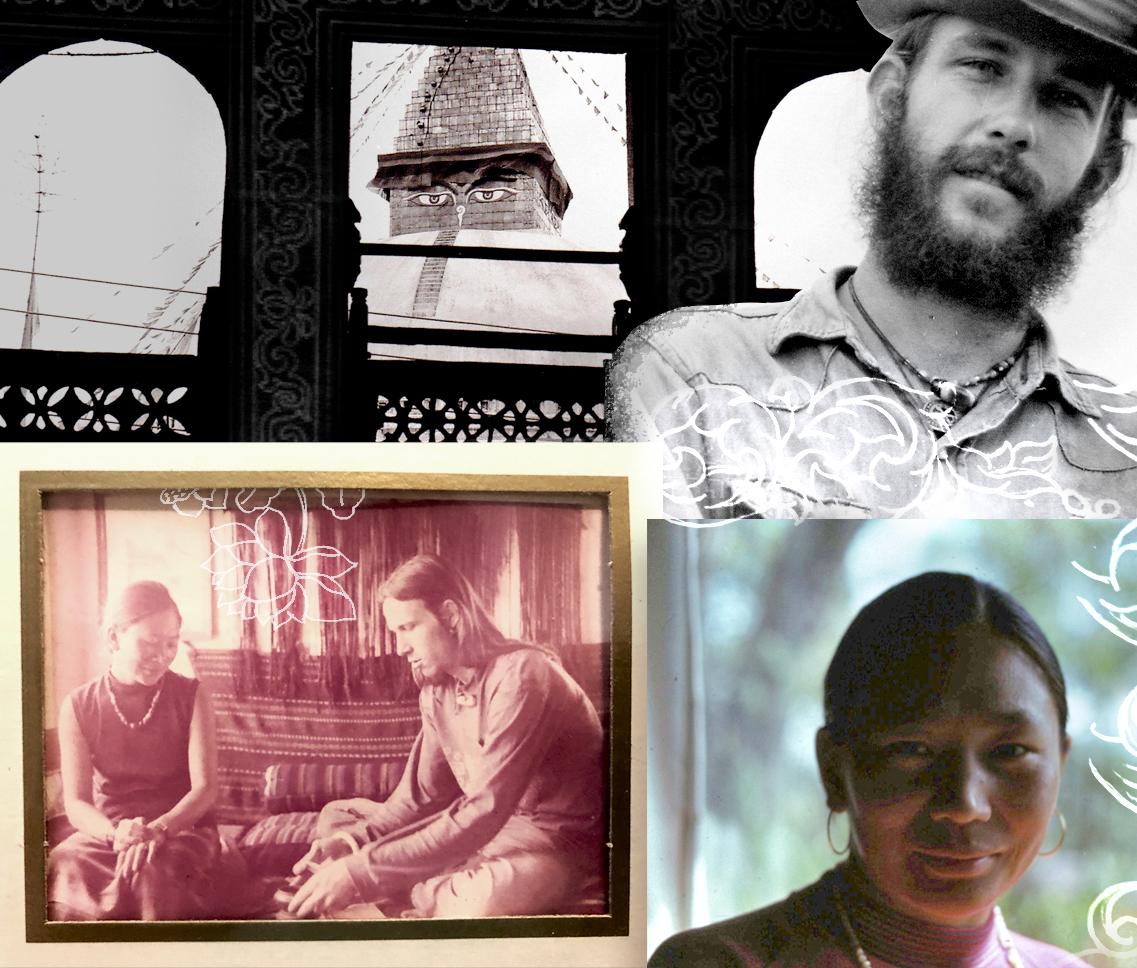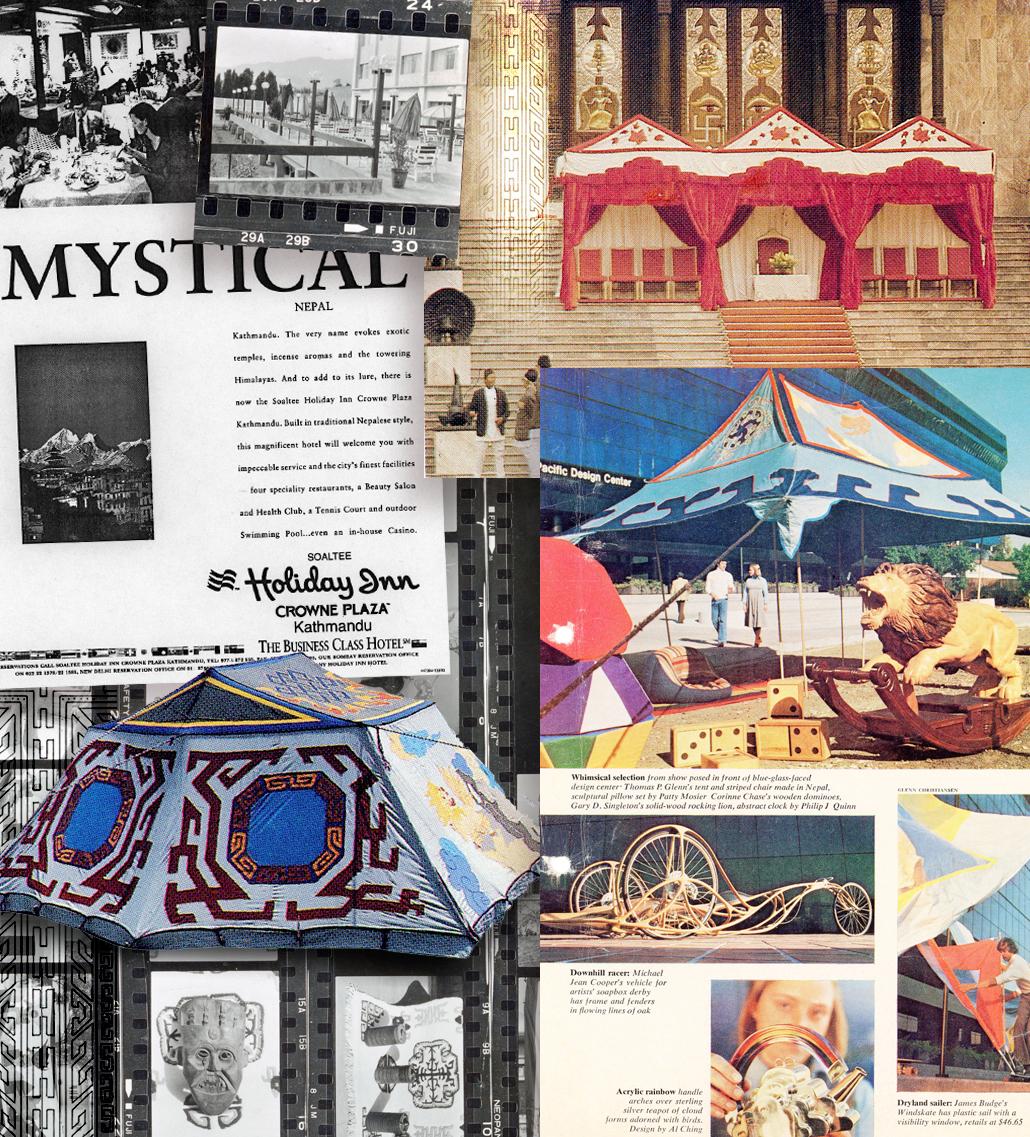Tent Tom's Story
In 1971 Tom hopped on a bus in London along with Wavy Gravy, Dr. Larry Brilliant, and a handful of other American kids embarking on the famed Hippie Trail. Six months later the bus pulled into Kathmandu where Tom would plant roots for the next decade, became a textile designer, marry a beautiful Tibetan woman, and have two kids.
Inspired by spectacular Tibetan tents customarily used by royalty and the upper classes for outings in the Himalayan mountain regions, he soon had a workshop producing traditional bias tape appliqué tents and canopies, appliqué tapestries, and wall hangings, and vegetable-dyed, hand-knotted Tibetan carpets. To this day he is known to people around the world as TentTom.


Shortly after arriving in Kathmandu, Tom left for the countryside, living alone in the Himalayan jungle in a traditional Tibetan tent for six months. It was that experience that inspired him to become a textile designer.
Tom extensively researched Himalayan design and traditional weaving and dying techniques, employing these traditional techniques in his shops and ultimately, becoming instrumental in reviving the vegetable dying technique in the region. The vegetable dye produced a palette of soft, subtle colors that were in contrast to the bright chemically prepared dyes which was the contemporary standard at the time.
Using this wealth of knowledge, combined with elements of contemporary design, function, and modern geometric lines, TentTom's specific style became known throughout the area.
TentTom’s work quickly gained recognition with collectors including Tom Pritzker and Biki Oberio (then owner of the Soaltee Hotels). Most notably, TentTom was asked to create a royal canopy for the then King of Nepal, King Birenda, for his thirty-fifth birthday.
In 1976 TentTom was selected for the prestigious juried design competition, California Design 12 Exhibit, with his tent and furniture designs serving as a central feature at the Los Angeles Pacific Design Center Exhibition.

Later in his career, TentTom would go on to work with His Holiness and the Tibet House Foundation for the Year of Tibet, presenting His Holiness with a traditional appliqué during an introduction at Cornell University in 1991.
TentTom also coordinated one of the earliest live streams of His Holiness’s teaching in 2002, working with Dr. Larry Brilliant and Akamai to provide a free live stream of HH teachings around the world in multiple languages. Using digital printing techniques, TentTom created inkjet-printed canopies, tapestries, and door hangings to adorn the halls of the Los Angeles Coliseum, transforming the stadium into a makeshift monastery for H.H. teachings.

During 1995’s Tibetan Freedom Concert Tour, MTV News and the Beastie Boys Milarepa Foundation tapped TentTom to create two tents for the Tibetan Freedom Concert and the Lollapalooza Tours. The tent created for the Tibetan Freedom Concert at SF’s Golden Gate Park was used to interview artists right after their performances.
Most recently in 2017, hundreds of TentTom’s photo negatives have been donated to the Taragon Museum of Kathmandu, where they have been archived and will assist in future reconstruction efforts of structures and statues destroyed in the numerous earthquakes since his photos were taken in 1971. Tom’s capturing of the smallest of details in his hundreds of photos is of particular interest to the historians engaged in reconstruction efforts.
